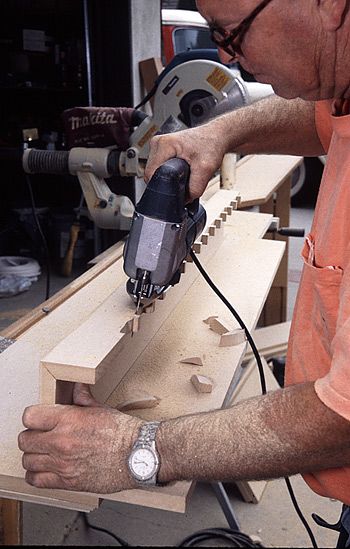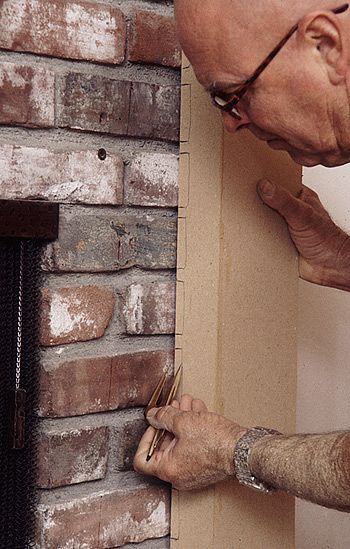Question
I have a potential customer that would like a shelf mantle installed. I have built a few, but this one is on a rough surface. The surround is floor to ceiling stacked stone/brick. They are cut to about 4" high and length varies. Their sides are very rough, with about 1/2" variation on the surface, like chiseled stone, and the mortar joint is about 1" back from the face. They are mortared in place like brick, with level rows.
My concern is that it isn't practical to scribe the wood to such a rough surface, and I wouldn't want to leave large gaps all the way around. I don't know how deep the stone is to know if it is even practical to knock a section out and then have it reinstalled and cut to fit around the mantle.
Any suggestions on how to tackle this one?
Forum Responses
(Architectural Woodworking Forum)
From contributor D:
We've done just that quite a bit. It is very labor intensive, so charge accordingly. You have to build the mantel as a box. The shelf goes on top of that and overhangs, then crown, etc.
To make grinding easier, make a mockup of the box including shelf out of 1/4" MDF. Go on site and grind. Then you can grind in your shop to get it real close, and fine fit on site. Also when you build your mantel, you could cut the parts that are going to be against the rock at a 45, less material to grind away. The install will probably be more than the mantel.
For the install I normally slap a board or built-up piece on the wall, slide the mantle over it and shoot a couple finish nails into the top. I would expect that this will be a very lengthy install for such a simple piece.
I use a jig saw with a Collins coping foot to cut the scribes. Sometimes if the pilaster is wide, I can cut from underneath. There's usually enough room inside the hollow mantel and pilasters to move the jigsaw around. If not, I cut from above, but I don't like to. Cutting from the top means using a finer blade to prevent tear out on stain grade work, so it's slower going. Takes about 20-30 minutes to scribe a pilaster leg to a brick surround, about the same for the shelf. I used to use a grinder some time ago, but got tired of the noise and the dust, and the grinder never cut as delicately as the jigsaw does.
Here's the scribe after the second step. It still needs a little more work to get tight to the brick face. A couple are a little bit over cut... Oh well, a little caulking on this paint grade pilaster won't matter.

Here's the cutting part...

Here's the scribing part...

We usually level a fastening block on the stone wall and then place the hollow mantel over the fastening block, level, and then scribe to fit. We use a jig saw with a blade that cuts on the downstroke, as well as a rotozip. If it's a finished product, make sure to use wide masking tape before you scribe it or fit it so as not to scratch the finish.
In my opinion, the key is customer education. The customer needs to know it is not going to be a tight fit. It will be level and notched around the larger protrusions of stone. If they want a tight fit, they are better off filling the gap with mortar, at least then it will match the mortar fit to the wall and ceiling. If they insist on a tight fit, they need to either pay the price or go someplace else, and quite frankly you might be better off if they went someplace else. If you charge them an arm and leg, they will want their money's worth and complain like hell at every gap, no matter how small.
Contributor W, we give our customers a choice on scribing to rock and brick.
1) No scribe, you can fill it with mortar (quoted).
2) 1/2", no gap greater than 1/2" (quoted).
3) Tight 1/4", all gaps under 1/4" (by the hour).